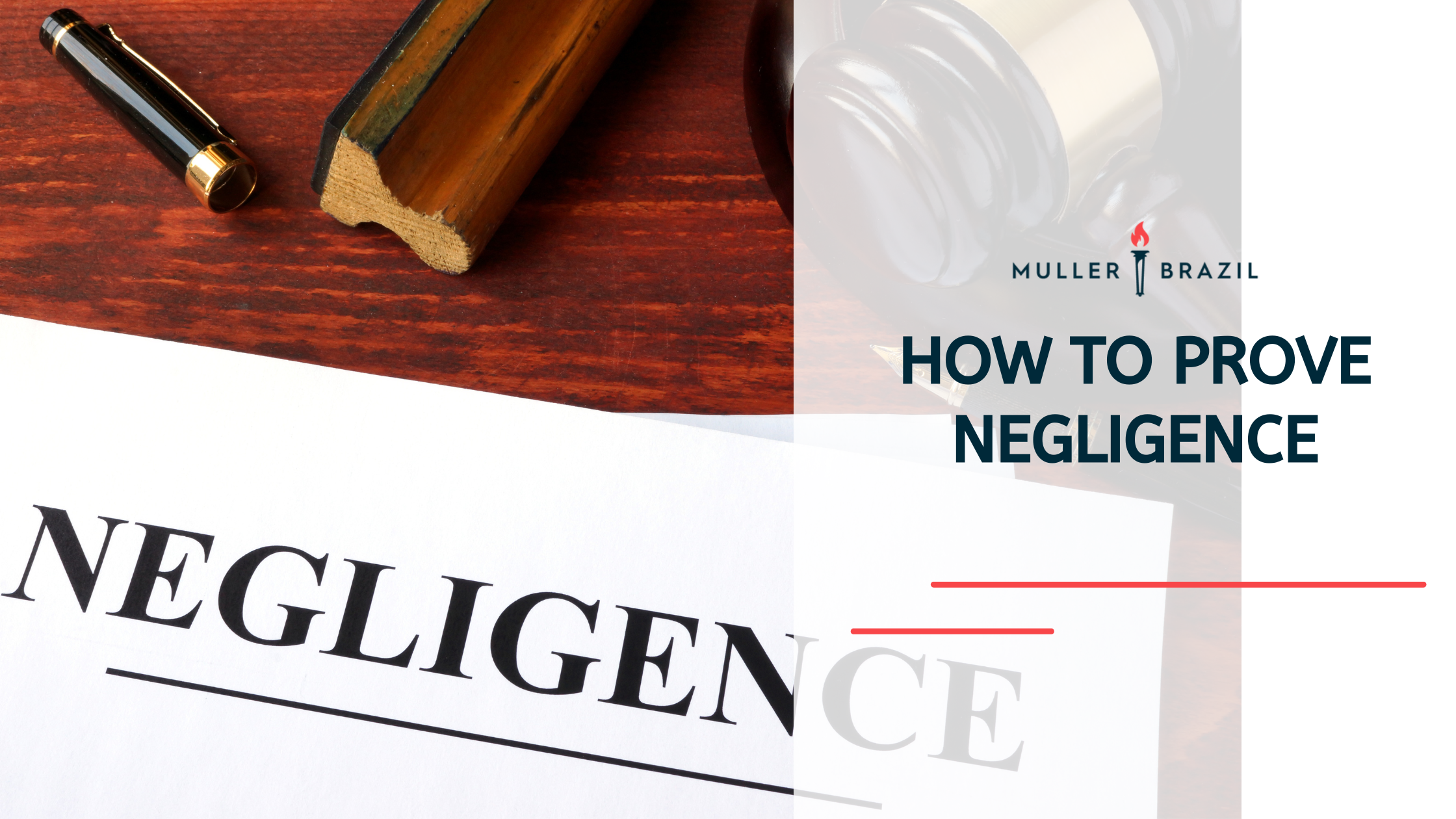Negligence is a legal concept at the heart of most personal injury claims. It occurs when a person’s actions fail to meet the standard of reasonable care, leading to harm.
Whether the incident involves a car accident, property damage, or even a wrongful death, proving negligence is necessary for an injured party to seek compensation through a personal injury lawsuit.
To successfully prove negligence, the injured person must demonstrate that the defendant owed them a legal duty, the defendant breached that duty, and the defendant’s actions directly caused harm - resulting in medical bills, lost wages, or emotional distress.
Below we will break down the four elements of negligence, the types of evidence needed to support a negligence claim, and how to overcome common challenges in negligence cases. If you’re considering filing a negligence lawsuit, this article will help you understand what’s required and how an attorney can assist you every step of the way.
What is Negligence?
Negligence happens when someone fails to act as a reasonable person would under similar circumstances, leading to harm. It’s often at the center of personal injury cases like car accidents, slip and falls, or wrongful death claims.
In a negligence lawsuit, the injured person (called the plaintiff) must show that the negligent party is legally responsible for their injuries. This means proving the defendant owed a legal duty, breached that duty, and caused the plaintiff’s injuries.
The goal of a negligence claim is to help the injured party recover compensation for medical bills, lost wages, property damage, and even non-economic losses like emotional distress.
What Are the Four Elements Needed to Prove Negligence?
To prove negligence in a personal injury case, the plaintiff must establish four key elements:
Duty of Care
- The defendant owed a legal duty to act with reasonable care to prevent harm.
For example: Drivers owe others on the road a duty to follow traffic laws and drive safely. Property owners must keep their premises safe to avoid accidents.
Breach of Duty
- A breach occurs when the defendant’s actions fall short of what a reasonable person would do under similar circumstances.
Examples include: Texting while driving or failing to clean up a spill in a store.
Causation
- The defendant’s negligence must have directly caused the plaintiff’s injuries. This is called proximate cause, meaning the harm was a foreseeable result of the defendant’s actions.
Damages
- The injured party must show actual harm, such as medical bills, lost income, property damage, or non-economic damages like emotional distress.
Get Help Today
What Evidence is Needed to Prove Negligence?
Proving negligence in a personal injury lawsuit requires strong evidence to show that the defendant’s actions caused harm. The injured person must gather proof to support each element of their negligence claim.
Common Types of Evidence Include:
- Physical Evidence – Items involved in the accident, like a damaged car, a defective product, or torn clothing.
- Photos and Videos – Images of the accident scene, property damage, or plaintiff’s injuries can be powerful evidence.
- Medical Records – Doctor’s notes, test results, and medical bills help prove injuries and the cost of medical care.
- Witness Statements – Testimony from people who saw the accident occur can support the plaintiff’s claim.
- Expert Witnesses – Medical experts, financial experts, and accident reconstruction specialists can explain complicated details, like how injuries happened or how much the injured party lost in income.
How is Negligence Proven in Court?
To prove negligence in court, the plaintiff must present evidence and clearly explain how the defendant’s actions caused harm. The goal is to show that the defendant owed a legal duty, breached that duty, and directly caused the plaintiff’s injuries.
Steps to Prove Negligence in Court:
- Establish Duty of Care: Show that the defendant owed the injured party a legal obligation to act with reasonable care in the given situation.
- Prove a Breach of Duty: Demonstrate that the defendant breached this duty through careless or reckless behavior, such as running a red light or leaving a dangerous spill uncleaned.
- Link Causation to Injuries: Provide evidence that the defendant’s negligence directly led to the plaintiff’s injuries. This may include medical records, expert testimony, and photos from the accident scene.
- Show Damages: Prove the plaintiff suffered losses like medical bills, lost wages, property damage, or emotional distress as a result of the accident.
Challenges in Court:
- The defendant may try to argue that the injured person was partially at fault or that the injuries were caused by something else.
- Some negligence cases involve comparative negligence, meaning the plaintiff may still recover compensation even if they are partially responsible, though their recovery might be reduced.
How Long Do You Have to File a Negligence Lawsuit?
The time limit to file a negligence lawsuit depends on state laws, also known as statutes of limitations. In Pennsylvania, most personal injury cases must be filed within two years from the date the accident occurred.
Exceptions May Apply:
- Cases involving government agencies often have shorter deadlines.
- If the injured person is under 18, the timeline may not start until they turn 18.
Missing the deadline can result in losing the right to seek compensation for medical bills, lost wages, property damage, and non-economic damages like emotional distress. An attorney can explain your state’s specific deadlines and help you act quickly.
Contact Us Now
Why Should You Hire a Lawyer to Prove Negligence?
Proving negligence can be complicated, especially when dealing with insurance claims, medical records, and legal responsibility. A personal injury attorney can help build a strong case by:
- Gathering evidence like medical bills, expert testimony, and photos of the accident.
- Proving the defendant owed a legal duty, breached that duty, and caused harm.
- Negotiating with insurance companies to recover compensation for lost income, emotional distress, and other damages.
At Muller Brazil, we understand the challenges injured parties face when pursuing personal injury claims. Whether your case involves a car accident, property damage, or wrongful death, our team is here to fight for the justice you deserve.
Ready to Get Started? Contact Us Today!
If you’ve been injured because of someone else’s negligence, don’t wait to take action. At Muller Brazil, we’re committed to helping injured parties through the legal process, recover compensation, and move forward with confidence.
Whether you’re facing medical bills, lost income, or emotional distress, our attorneys are here to fight for the compensation you're entitled to.
Our consultations are always free. Fill out the form here and one of our lawyers will be in contact with you! You can also call us at 215.885.1655 or email us at info@mullerbrazil.com to get started today.
Meet the Author
Max Muller - Founding Partner
Maximillian J. Muller is a founding member of Muller Brazil and My Vaccine Lawyer. Mr. Muller is an experienced litigator in both Federal and State Courts in the areas of vaccine injury, unsafe drug and medical device injury, personal injury, mass torts, and bad faith. Mr. Muller prides himself on keeping Muller Brazil on the cutting edge of injury litigation and running a client-focused practice.
Learn more about Max Muller ⇒





